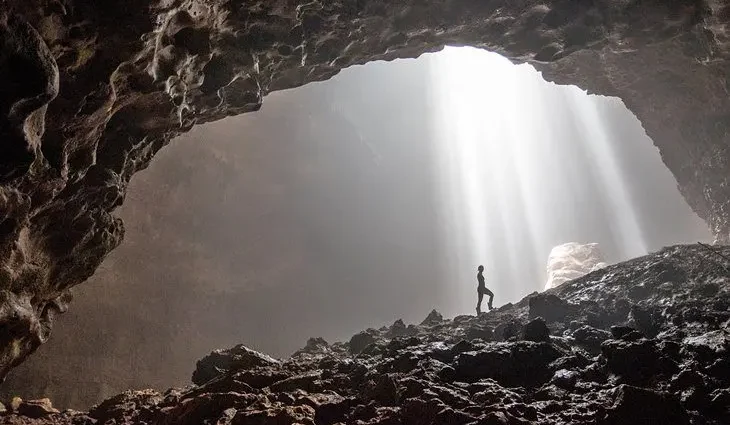Contents
- 1. Jomblang Cave, Yogyakarta
- 2. Raja Ampat Islands
- 3. Mount Bromo, East Java
- 4. Lake Toba, Sumatra
- 5. Pink Beach, Komodo Island
- 6. Dieng Plateau, Central Java
- 7. Crystal Bay, Nusa Islands
- 8. Kelimutu Volcano, Flores Island
- 9. Gitgit Waterfall, Bali
- 10. Tanjung Puting National Park, Central Kalimantan
- 11. Broken Beach, Bali
- 12. Mount Rinjani
- 13. Candi Borobudur Temple Complex
- 14. Komodo National Park
- 15. Rice Terraces in Ubud, Bali
- 16. Bunaken
- 17. Tangkuban Perahu
- 18. Krakatau Volcano
- 19. Tana Toraja
- 20. Gili Islands
Indonesia is home to a large number of pristine islands and soft white beaches, many volcanoes, and plenty of rainforest for trekkers to discover. An ancient country with temples, ruins, and palaces, Indonesia has a long cultural history that’s just as magical to discover as its outdoor sights. If you are coming to the country to capture beautiful pictures, you won’t be disappointed. The photography possibilities are vast.
1. Jomblang Cave, Yogyakarta
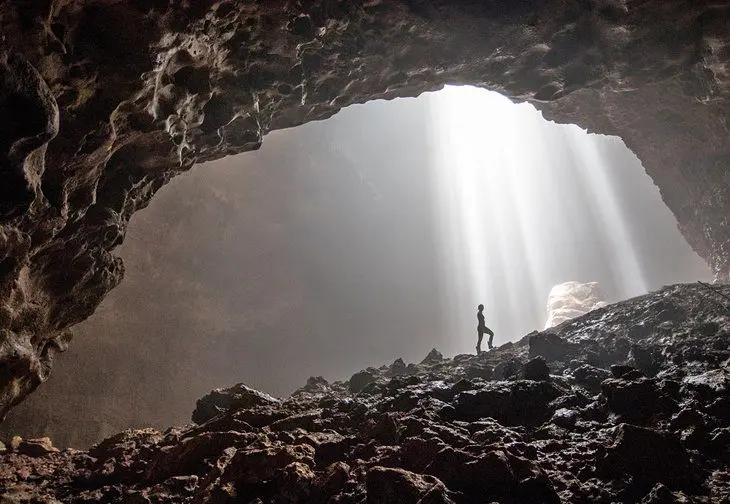
Jomblang Cave can only be reached by being manually rappelled 60 meters down a steep cliff. A muddy, slippery walk deeper into the darkness gets you to the “heaven light” area, where the cave’s famous photos are taken. Over 400 caves dot the mountainside in this quiet village area far away from city life.
2. Raja Ampat Islands

Over 1,500 islands and islets make up Raja Ampat, where more than 600 species of hard corals live and thrive. The islands’ rainforests also serve as a refuge for many species of birds, reptiles, and mammals. Raja Ampat is heavily involved with turtle conservation initiatives.
3. Mount Bromo, East Java
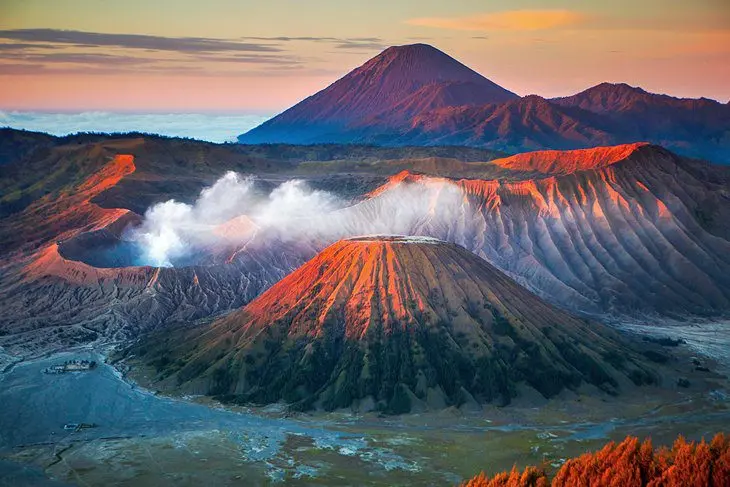
An active volcano, Mount Bromo is part of Bromo Tengger Semeru National Park. Hikers often leave from the nearby mountain village of Cemoro Lawang to reach the best view of the volcano from the top of Mount Penanjakan nearby. A mix of tropical rainforest, a desert-like area, and a cold subalpine zone make up the park’s ecosystem.
- Read More: Top-Rated Tourist Attractions in Indonesia
4. Lake Toba, Sumatra
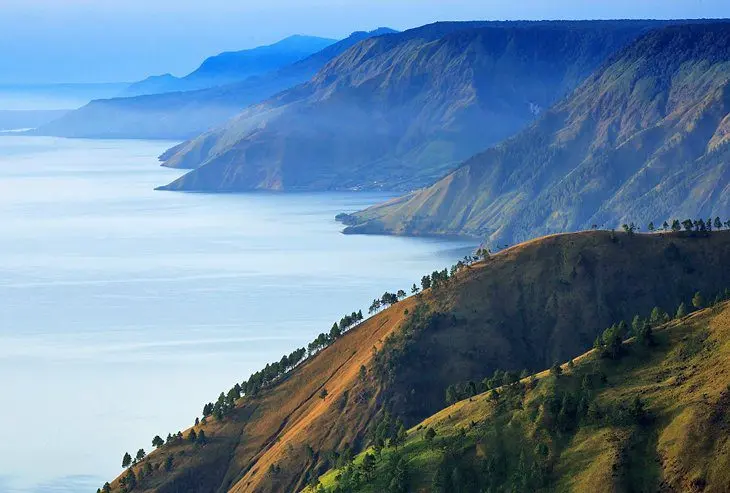
Lake Toba is a unique deep-blue lake that sits in the caldera of a supervolcano. Toba is the world’s largest volcanic lake, the result of the largest volcano eruption on Earth in the last 20 million years. Although swimming is not possible, and very few species inhabit the area, the lake is a popular tourist destination for hikers and photography enthusiasts.
5. Pink Beach, Komodo Island
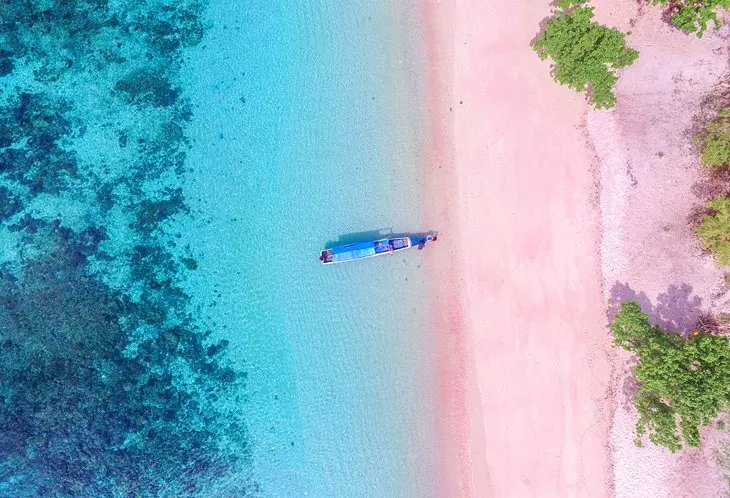
Pink beaches around the world are always interesting places. The Pink Beach is truly pink, the result of the red pigment produced by microscopic organisms called Foraminifera mixing with the white sand. Available only by boat, the beach and its bright local corals offer the perfect setting for snorkeling and diving. Photographers can capture unique images of the contrasting pink sand and blue sea.
6. Dieng Plateau, Central Java

Poisonous lakes and regular volcanic fumes are the norm in the area, formed after the eruption of an ancient mountain. Remains of temples built by ancient Javanese Hindus as far back as the 8th century now dot the mountainside. Sunrises are multi-colored here, with hues of blue, purple, and green reflecting off the local lake.
7. Crystal Bay, Nusa Islands
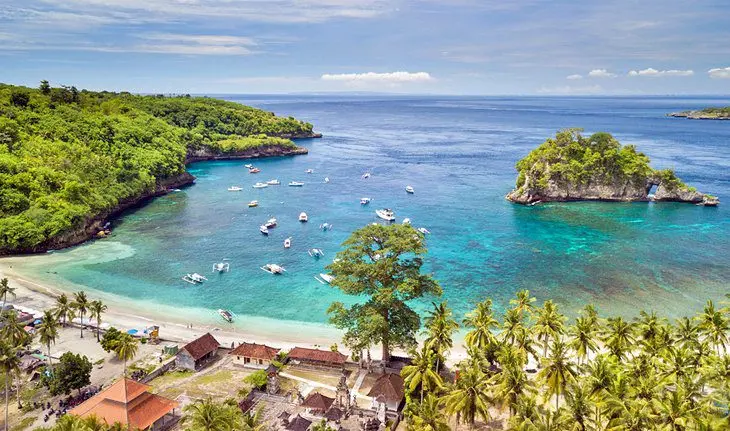
Located just off the coast of Bali, the Nusa Islands boast thick mangroves, a blue lagoon, several points for cliff jumping, and deep blue tide pools. Located in a secluded cove, Crystal Bay offers a 200-meter stretch of soft, white sands.
Accommodation: Best Beach Resorts in Bali
Read More:
- Top-Rated Tourist Attractions in Bali
- Top-Rated Beaches in Bali
8. Kelimutu Volcano, Flores Island
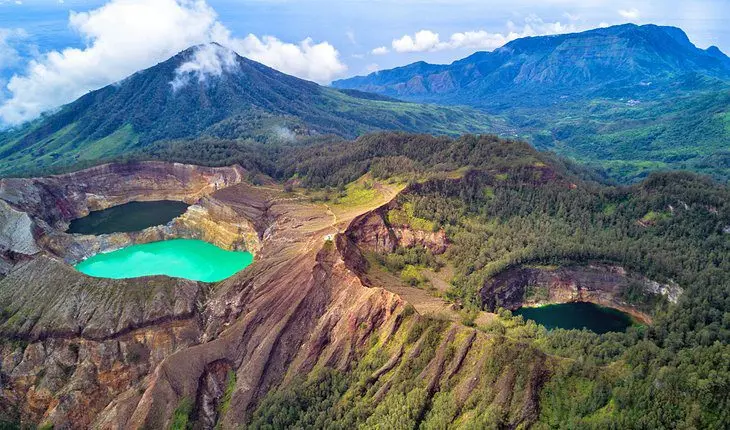
The Kelimutu Volcano is a stunning attraction in itself, but it’s the three volcanic crater lakes here that attract the most attention. The lakes are all different colors, with hues that are always changing depending on the underlying volcano’s activity.
9. Gitgit Waterfall, Bali

Somewhat hidden at the end of a jungle trail, the 40-meter-tall Gitgit Waterfall rests among clove plantations and thick rainforest. Visitors come here for picture opportunities and to jump into the clear blue pools of water underneath the falls for a cooling swim.
10. Tanjung Puting National Park, Central Kalimantan

Tanjung Puting National Park is home to one of the largest protected groups of Borneo orangutans. Although it’s possible to hike parts of the park, the best chance to see wildlife is from a klotok, a traditional motorized riverboat. It’s sometimes possible to sleep in these boats, under the cover of a mosquito net and surrounded by the sounds of the jungle.
11. Broken Beach, Bali
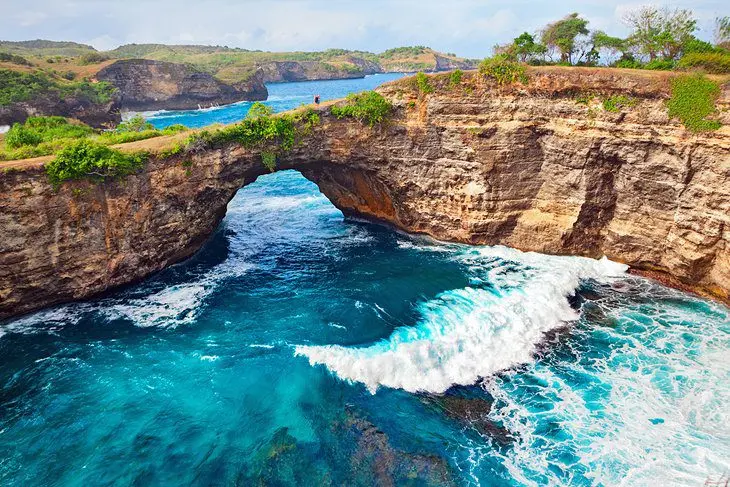
Pasih Uwug, better known as “the broken beach,” is the combination of a natural arch over a sea pool. The “broken” refers to the opening in the rocky cliffs, a window through which the waves crash in a foamy turquoise show against the stone and the soft golden beach.
12. Mount Rinjani
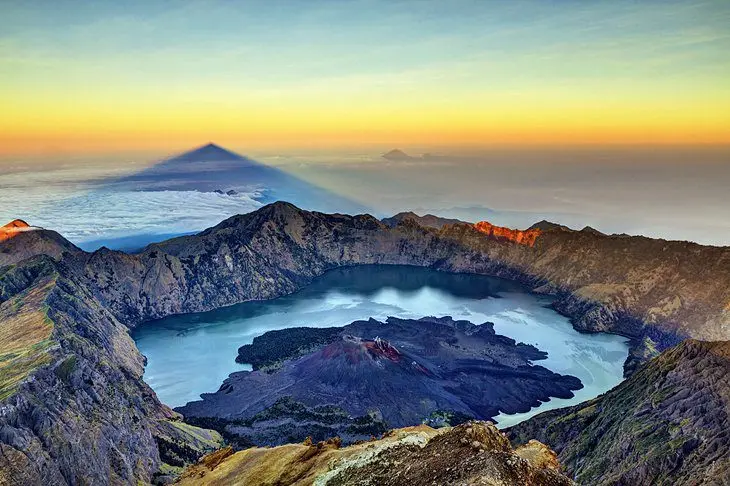
An active volcano within a national park of the same name, Mount Rinjani attracts trekkers, who climb up to visit the crater rim and blue lake or even walk into the caldera itself. Summiting Rinjani, the second-highest mountain in Indonesia, can take as long as four days – but the views are just as stunning along the way.
13. Candi Borobudur Temple Complex
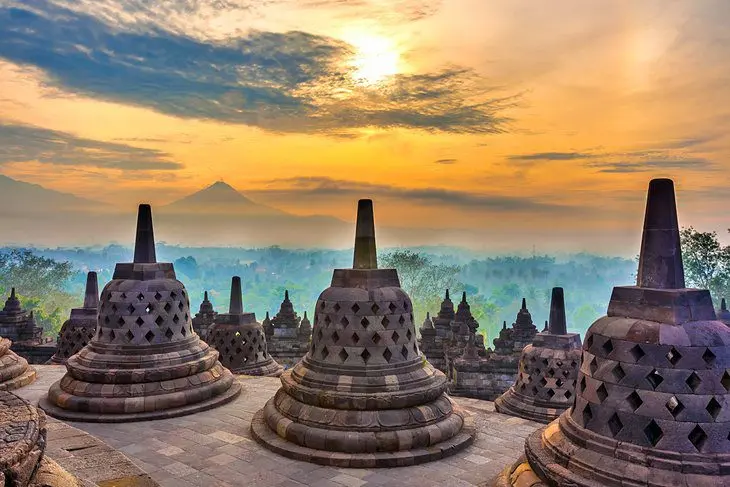
The view from 9th-century Mahayana Buddhist Candi Borobudur Temple is particularly stunning at sunrise, as the sun bounces off the twin volcanoes – Mount Merapi and Mount Merbabu – in the distance. Combined, the three temples that are part of the complex make up the largest Buddhist temple in the world.
14. Komodo National Park
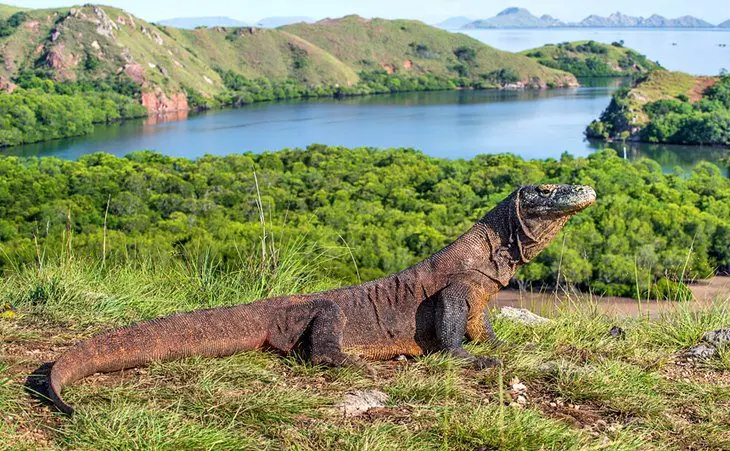
The Komodo National Park is home to the world’s largest lizard. Komodo dragons can reach up to three meters long and are related to the megafauna that died during the last Ice Age. The park is also home to a very rich marine biodiversity and attracts divers from all over the world.
15. Rice Terraces in Ubud, Bali
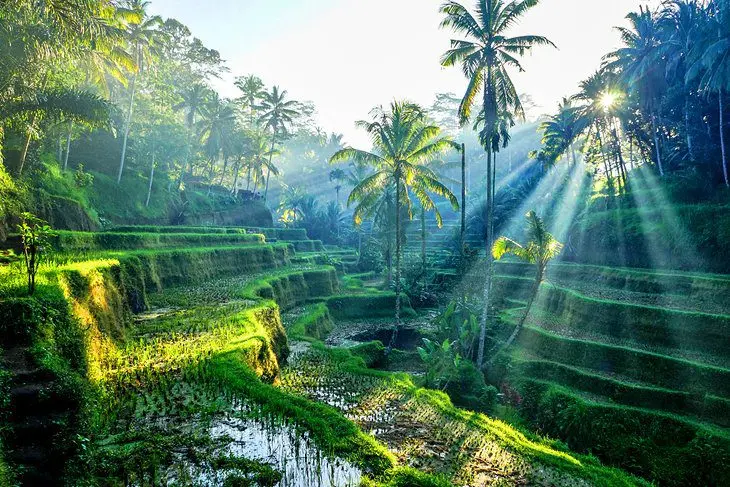
Lush green rice paddies cover parts of the Ubud region. Famous for their terraced layout, the paddies are particularly beautiful in the early morning as the soft sunlight bounces off the water, and the wind rustles through the crops.
Accommodation: Top-Rated Family Resorts in Bali
16. Bunaken

A tiny island of just eight square kilometers, Bunaken offers some of the best diving in Indonesia because of its widely diverse coral, 33 species of butterfly fish, and much more to see and discover underwater. Once on land, you can enjoy the pristine beaches and walk to the secluded coves on the northern end of the island.
17. Tangkuban Perahu
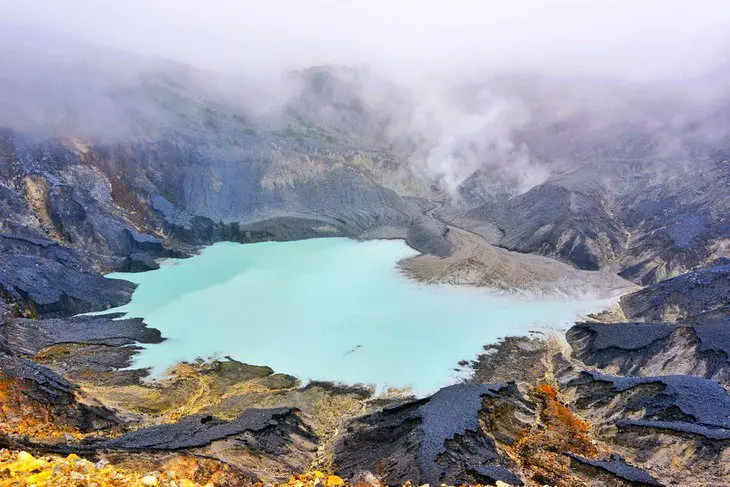
Indonesia has more active volcanoes than any other country in the world, so it’s no surprise that they’re a favorite destination for visitors. Located just 28 kilometers outside the city of Bandung, Mount Tangkuban Perahu is easy to access and offers plenty of activities – including hiking, three craters to photograph, and beautiful views from the top.
18. Krakatau Volcano
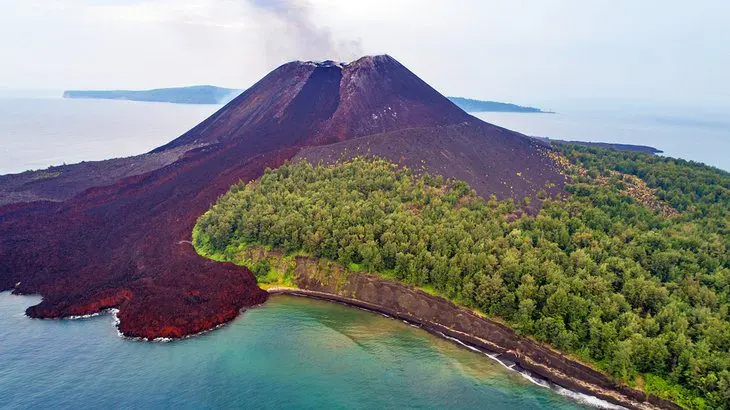
Located between the islands of Java and Sumatra, this very active volcano is part of Ujung Kulon national park (famous for its diving and marine life) and can only be reached by a two- to three-hour boat ride from Anyer or Carita beach. Day trips are the most common option to visit Krakatau, but it’s also possible to set up a campsite overnight and hike the volcano the next day if you arrive with a guide.
19. Tana Toraja
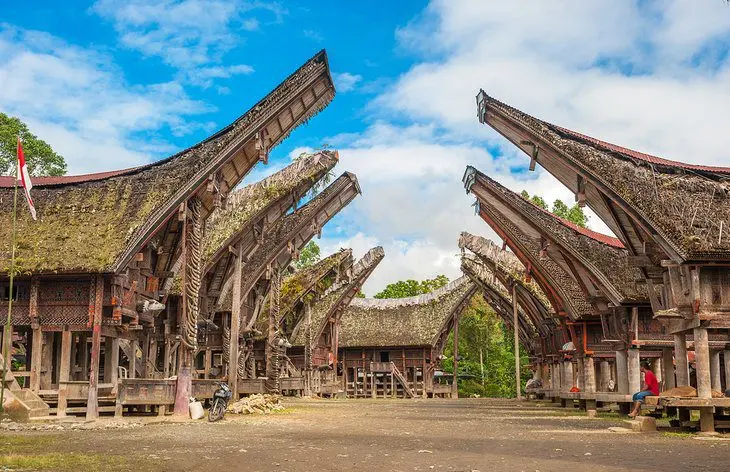
Home to the Toraja ethnic group, this Indonesian region is stunning and very sheltered. Tourism to Toraja villages has grown in the last few decades, especially to see their unique houses with upward-sloping roofs and religious ceremonies, which feature a lot of magic and mysticism.
20. Gili Islands

Just a speedboat ride away from Bali, the Gili islands have a traditionally laid-back attitude that makes them the perfect tropical escape. The turquoise sea and the palm-fringed beaches with plenty of powdery white sand don’t hurt either. The diving and snorkeling are world-class, too, thanks to the clear waters and the abundant marine life.










